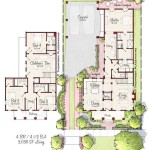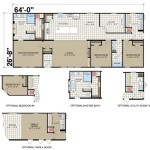How Much Do Architects Charge For House Plans?
Determining the cost of architectural services for house plans is rarely a straightforward process. Numerous factors influence the final price, making it essential for prospective clients to understand the various pricing models and considerations involved. Comprehending these elements can empower clients to make informed decisions and budget effectively for their architectural needs.
The cost of architect-designed house plans is not a fixed figure; rather, it represents a complex interplay of factors related to the scope of the project, the architect's experience, and the chosen fee structure. The complexity of the design, the size of the house, and the level of detail required all contribute to the overall cost. Furthermore, different architects employ varying fee structures, each with its own advantages and disadvantages. Understanding these structures is paramount for effective budget management.
Transparency in pricing is crucial. Architects should clearly outline their fees upfront, detailing what services are included and what additional costs may arise. This clarity helps avoid misunderstandings and ensures that clients are fully aware of the financial implications before committing to the project. A written contract specifying the scope of work, fee structure, and payment schedule is a necessary safeguarding measure for both the architect and the client.
Fee Structures Used by Architects
Architects typically utilize several different fee structures when charging for their services, including a percentage of construction cost, hourly rates, fixed fees, and cost-plus fees. Each of these methods has inherent advantages and disadvantages, making it crucial to carefully consider which structure aligns best with the specific project requirements and budget constraints.
Percentage of Construction Cost: This is a common method where the architect's fee is calculated as a percentage of the total cost to construct the house. The percentage typically ranges from 5% to 15%, depending on the complexity of the project and the architect's experience. For example, if the estimated construction cost is $500,000 and the architect charges 8%, the fee would be $40,000. This structure provides a direct correlation between the architect's compensation and the scale of the project.
Hourly Rate: Some architects charge an hourly rate for their time. This rate can vary significantly based on experience, location, and specialty. Hourly rates can range from $100 to $300 or more. This structure is often used for smaller projects or when the scope of work is difficult to define upfront. It offers flexibility, but it can also be challenging to predict the total cost due to the variable nature of the design process and potential unforeseen issues.
Fixed Fee: A fixed fee, also known as a lump sum, is an agreed-upon price for a specific scope of work. This structure provides cost certainty, making it attractive for clients with a defined project scope and budget. However, it is crucial to ensure that the fixed fee accurately reflects the amount of work involved, as unexpected changes or additions to the project can lead to renegotiations and potential cost overruns. The architect typically prepares a detailed estimate based on the anticipated hours, required drawings, and potential consultations.
Cost-Plus Fee: This method involves the architect charging their direct costs (such as employee salaries, materials, and consultants) plus a markup for profit. This structure can be transparent, but it requires careful tracking of expenses and a clear understanding of the markup percentage. It is typically used for complex projects where the scope of work is not entirely defined at the outset.
The most suitable fee structure depends on the specifics of the project and the client's preferences. A percentage of construction cost is often preferred for larger, more complex builds, while an hourly rate or fixed fee may be more appropriate for smaller projects with a well-defined scope. Open communication between the architect and client is crucial in determining the most appropriate and mutually beneficial fee arrangement.
Factors Influencing the Cost of House Plans
Several factors significantly impact the cost of house plans. Understanding these elements enables clients to better anticipate the financial implications of their design choices and collaborate effectively with their architect. These factors include the size and complexity of the house, the level of customization required, and the location and experience of the architect.
Size and Complexity: The size of the house is a primary driver of cost. Larger homes require more design effort, more detailed drawings, and potentially more complex structural considerations. Similarly, the complexity of the design, including intricate rooflines, unconventional layouts, and specialized features, increases the architect's workload and associated fees. A simple, rectangular house will generally be less expensive to design than a multi-story home with numerous angles and custom features.
Level of Customization: The extent to which a client desires a fully customized design significantly impacts the cost. A house plan based on a pre-existing template or stock plan will typically be less expensive than a completely original design tailored to the client's specific needs and site conditions. Customization often involves extensive client consultations, iterative design revisions, and detailed documentation to ensure the design accurately reflects the client's vision.
Architect's Location and Experience: Architects in metropolitan areas or regions with high demand typically charge higher fees than those in smaller towns or less competitive markets. An architect's experience and reputation also play a significant role. Highly experienced architects with a proven track record often command higher fees due to their expertise, industry recognition, and ability to handle complex projects effectively. However, less experienced architects may offer more competitive rates, making it important to carefully evaluate the architect's qualifications, portfolio, and client testimonials.
Additional Services: The inclusion of additional services, such as site analysis, interior design, landscape design, and construction administration, will further increase the overall cost. These services extend the architect's involvement beyond the initial design phase and require additional time and expertise. It is essential to clarify which services are included in the initial fee and which services are offered as add-ons.
Careful consideration of these factors is crucial in budgeting for architectural services. Clients should clearly communicate their needs and preferences to the architect upfront to ensure that the fee structure reflects the actual scope of work and avoids potential surprises down the line.
Stages of Architectural Design and Associated Costs
The architectural design process typically involves several distinct stages, each with its own set of tasks and associated costs. Understanding these stages helps clients appreciate the sequential nature of the work and the value of the architect's expertise at each phase. Typically, these stages include schematic design, design development, construction documents, and construction administration (which is often optional).
Schematic Design: This initial phase involves preliminary design concepts and exploring various possibilities to fulfill the client's requirements and site conditions. The architect will typically create sketches, diagrams, and preliminary floor plans to illustrate different design options. This stage focuses on the overall layout, massing, and spatial relationships of the house. The cost associated with this phase is typically a percentage of the overall fee, often around 15-20%.
Design Development: Building upon the selected schematic design, the design development phase refines the design and incorporates more detailed information. This stage involves selecting materials, specifying finishes, and developing detailed floor plans, elevations, and sections. The architect collaborates with structural engineers and other consultants to address technical aspects of the design. The cost of this phase generally accounts for approximately 20-25% of the total fee.
Construction Documents: This phase involves the preparation of detailed drawings and specifications that are used by the contractor to build the house. These documents include detailed floor plans, elevations, sections, structural drawings, mechanical drawings, and electrical drawings. They also specify the materials, finishes, and construction methods to be used. This phase requires a significant level of detail and accuracy, and it typically represents the largest portion of the architectural fee, often around 40-50%.
Construction Administration: This optional phase involves the architect overseeing the construction process to ensure that the house is built according to the design documents. The architect may visit the site regularly, review shop drawings, and respond to contractor questions. This phase helps ensure the quality of the construction and adherence to the design intent. The cost for construction administration typically ranges from 5% to 15% of the total construction cost, depending on the level of involvement.
Understanding each phase of architectural design empowers clients to actively participate in the process and appreciate the value of the architect's contributions at each stage. It also helps clients anticipate the costs associated with each phase and plan their budget accordingly.
Ultimately, determining how much architects charge for house plans is a multi-faceted process requiring careful consideration of the project's scope, the architect's experience, and the chosen fee structure. A transparent and collaborative approach between the architect and client is essential to ensure a successful and cost-effective project.

Fixr Com 2024 Architect Cost Of To Draw House Plans

Fixr Com 2024 Architect Cost Of To Draw House Plans

Fixr Com 2024 Architect Cost Of To Draw House Plans

How Much Does A Floor Plan Cost

Fixr Com 2024 Architect Cost Of To Draw House Plans

Fixr Com 2024 Architect Cost Of To Draw House Plans

Floor Planner Cost Hiring Draftsperson Forbes Home

Charges

2024 Cost Of Drafting House Plans Blueprints Homeguide

Average Cost To Hire An Architect In 2024 By Project Hour And More Forbes Home








